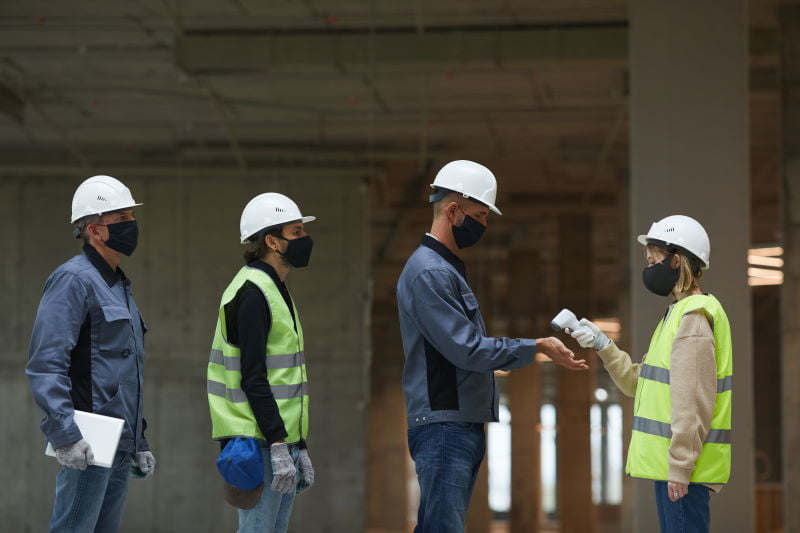In line with creating a COVID-19 workplace Health and Safety Plan, you should also develop a risk assessment and control initiative for your warehouse. This keeps your employees and operations the assurance that your business complies with CDC’s health standards when it comes to the coronavirus pandemic.
Doing a COVID-19 risk assessment for your warehouse is accomplished best by using a form. This makes it easier to gather the essential information needed for you to create a healthy and safe work environment.
When developing a risk assessment, include all employees in the workplace such as operational staff, utility employees, relief employees, janitorial staff, maintenance, and supervisory staff.
If customers or contractors enter the warehouse or workspace, develop plans to communicate modifications to work or service processes brought by health measures. Additionally, notify all workers that COVID-19 concerns should be directed to the identified coordinator.
Here are steps on how to do a COVID-19 risk assessment for your warehouse.
1. Assign Workplace Coordinator
Identify on-site workplace coordinators who would review and update your warehouse’s COVID-19 risk assessment and control. Assigning supervisors to maintain health measures and assess risk would make implementing and managing employee activities easier.
2. Create Risk Ratings
Create ratings using a scoring system to measure the risk in numbers. This gives it a quantifiable aspect, which could be conveyed easily to all people involved. For example, use 1 for an incident that would not occur and 5 for something that certainly would occur at any moment. Determining risk ratings would dictate what action you need to implement in your warehouse.
3. Identify The Hazards And Assessment Of Risk
Determine the hazards that come with each task, activity, or process performed in the warehouse, before COVID-19 control measures have been implemented. Using the matrix created earlier, assess the individual risk of each hazard, scoring them based on their likelihood and severity.
4. Identify Who Is At Risk?
Identify which individual or groups of people are at risk from the hazards of COVID-19. List and categorize them based on their jobs, age group, and health condition. The coronavirus has different severities depending on the state of the person infected.
5. Implement Control Measures
List existing health and safety control measures placed to prevent the spread of infection as far as is reasonably practical. Refer to CDC guidelines on COVID-19 measures for warehouses. Identify which controls or actions should be completed to reduce the risk rating to as low as practically possible.
6. Revise Risk Assessment Rating
After identifying the control measures, revise the risk assessment ratings keeping in mind the actions and measures implemented. This makes the risk assessment site specific and gives your supervisors better control of the operations.
7. Confirmation and Review
Confirm, monitor, and review controls and measures and update your risk assessment accordingly based on your prior evaluation. Have your designated health supervisor sign the forms along with an employee representative acknowledging and confirming the information.
Create a summary of findings and explain each item of the risk assessment to all employees and staff. For a warehouse, it is best if all personnel are involved to prevent and reduce the spread of COVID-19 better.
Check out these other COVID warehouse articles:
What Covid 19 Signage Should I Have In My Warehouse?
What Are The CDC COVID Guidelines For Warehouse Workers?


